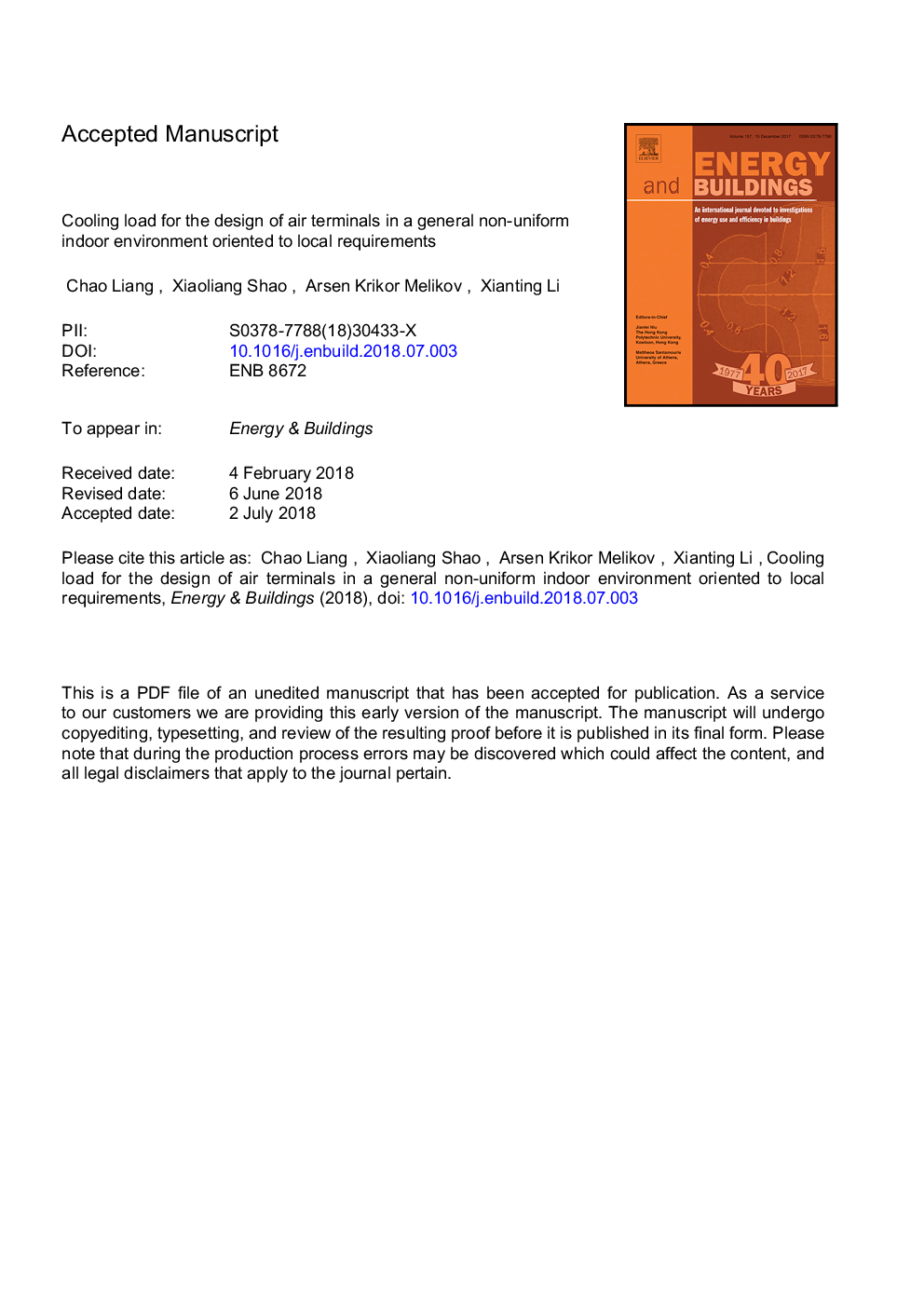| Article ID | Journal | Published Year | Pages | File Type |
|---|---|---|---|---|
| 6727581 | Energy and Buildings | 2018 | 41 Pages |
Abstract
The indoor environment is usually non-uniform and only local air zones need to be controlled. Although the specific calculation method of cooling load for the occupied zone has been proposed, no general definition and calculation method of cooling load exists for non-uniform indoor environment oriented to the local air zone. Thus, a general cooling load oriented to the local air zone, called local cooling load (LCL), was proposed for the design of air terminals in a general non-uniform indoor environment. Two calculation procedures of LCL, namely Procedure CAV (constant air volume) and Procedure VAV (variable air volume), were introduced. Experiments were conducted to illustrate LCL in a climate chamber measuring 4.12â¯mâ¯Ãâ¯2.89â¯mâ¯Ãâ¯4.2â¯m. Twenty cases were numerically investigated to analyze the influences of different ventilation systems, heat source locations, and target zones on the LCL. The results show that the two calculation procedures lead to almost the same values of LCL. The LCL can be less than, equal to, or even greater than the conventional cooling load in the uniform indoor environment, depending on the three influencing factors. The concept of LCL can be used for the air volume and temperature difference design of terminals in non-uniform indoor environments oriented to local requirements.
Keywords
Related Topics
Physical Sciences and Engineering
Energy
Renewable Energy, Sustainability and the Environment
Authors
Chao Liang, Xiaoliang Shao, Arsen Krikor Melikov, Xianting Li,
